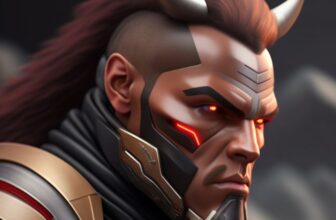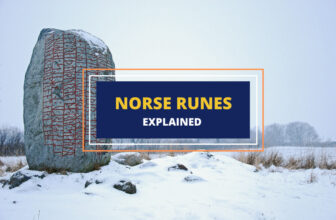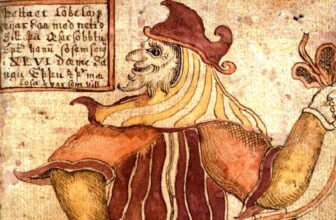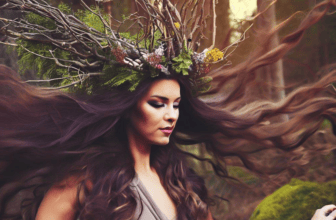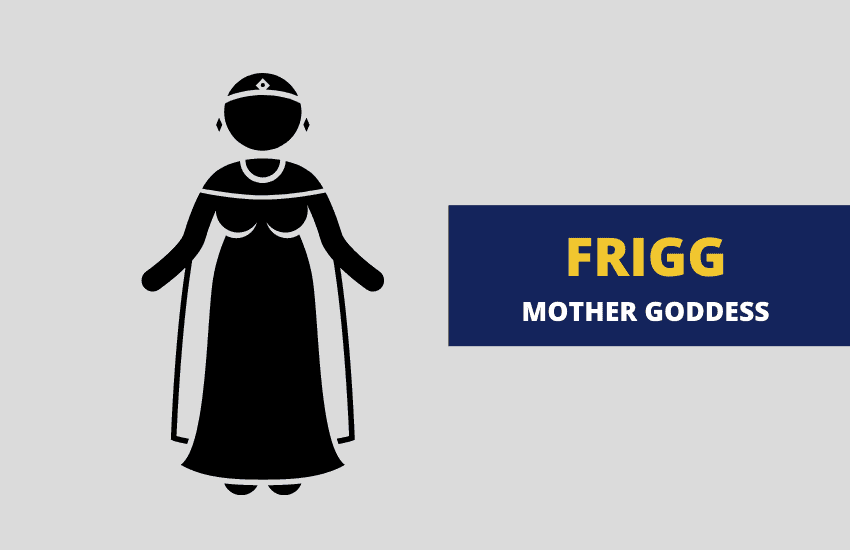
Table of Contents
Frigg is the famous matriarch of the Norse gods. A wife of Odin, she plays a similar role to that of Hera from Greek mythology and of Isis from Egyptian mythology. She’s a wise goddess who is worshipped as a symbol of motherhood and stable households as well as a goddess with divine forethought and knowledge.
Who is Frigg?
Frigg, often Anglicised to Frigga, is the wife of Odin, mother of Baldur, and highest goddess in the Æsir or Aesir pantheon of Norse deities. Her name means Beloved in Old Norse and she played the role of Asgard’s matriarch, governing alongside her husband and helping her fellow Æsir gods with her innate ability of foresight and wisdom.
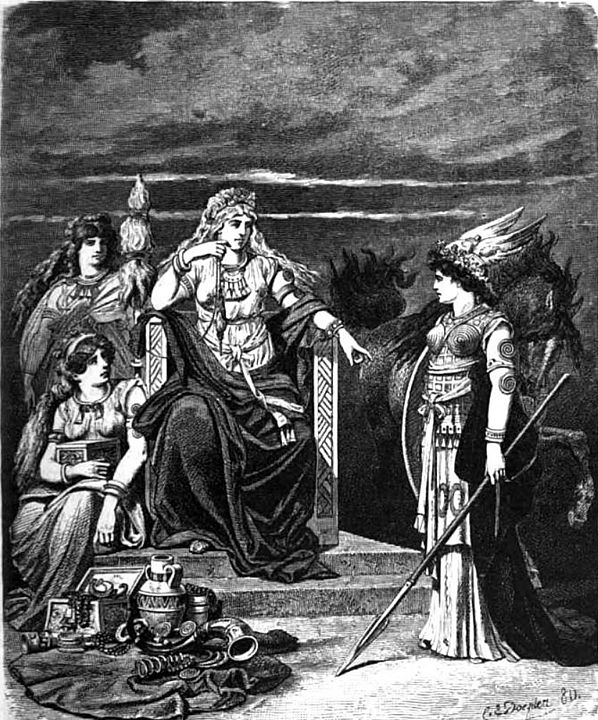
Curiously, however, for such a prominent deity, Frigg is mentioned rarely in the surviving Norse texts and sources. Plus, she’s often associated with the Vanir Norse goddess Freya/Freyja, the matriarch of the rivaling Vanir pantheon of Norse gods.
Both goddesses have their origins in the earlier Germanic goddess Frija, but are nevertheless separate beings with somewhat different characteristics and abilities. As they are mentioned in parallel in Norse myths and legends, their similarities only go so far as their mutual origin.
Frigg – Master of Magic
Like her husband Odin and like the Vanir goddess Freya, Frigg was a famous völva – a practitioner of the feminine seidr magic in Norse myths. Seidr was mostly used for foretelling fate and weaving it to the practitioner’s will.
In theory, seidr practitioners are described as able to alter any event in any way, regardless of prophecies and fate. Although Frigg is shown as being as powerful with seidr than Freya and Odin, she still failed to prevent certain key events in Norse mythology, such as the end-of-days even known as Ragnarok or the death of her beloved son Baldr.
Frigg and Baldur’s Death
While Odin had many children from several different goddesses and giantesses, Frigg only had three sons from her husband – Hermóðr or Hermod, the messenger god of Asgard and a Norse equivalent to the Greek god Hermes, as well as the twins Baldr (also called Baldur or Balder) and the blind god Höðr or Hod.
Of Frigg’s three children, Baldr was indisputably her favorite. A god of the sun, bravery, and nobility, Baldr was indescribably beautiful and fair. Thanks to her wisdom and ability of forethought, however, Frigg knew that Baldr had a dark fate waiting for him. To prevent anything happening to Baldr, Frigg made sure he would be invincible to damage from any and all materials and beings in both Midgard and Asgard (the human’s realm and the god’s realm).
Frigg did this by “calling” every material and every thing in the realms by name and making them swear an oath never to harm Baldr. Unfortunately, Frigg forgot about mistletoe, likely due to its perceived insignificance. Or, in some myths, she skipped mistletoe intentionally because she deemed it to be “too young.”
Regardless, mistletoe ended up being to Baldr what Achilles’ heel was to Achilles – his only weakness.
Naturally, none other than the trickster god Loki decided it’d be funny to exploit this weakness. At one of the many feasts of the gods, Loki gave Baldr’s blind twin Hod a dart (or arrow or spear, depending on the myth) made out of mistletoe. As Hod was blind, he couldn’t know what the dart was made out of so when Loki urged him to jokingly toss it toward the invulnerable Baldr, Hod did so and accidentally killed his own twin.
While such a death seems absurd for a “god of the sun”, it’s actually emblematic in Norse mythology. It symbolizes a couple of things outside of being yet another example of a fatal end of Loki’s tricks:
- No one is able to fully subvert fate, not even a völva master of seidr magic such as Frigg.
- Baldr’s death serves as a symbolic end of the “good days” for the Æsir gods and the beginning of a dark period that would ultimately end with Ragnarok. Just like the sun in Scandinavia sets for several months in the winter, Baldr’s death also marks the start of a period of darkness for the gods.
Freyja vs. Frigg
Many historians believe that these two goddesses are not just descendants from the old Germanic goddess Frija but were the same beings for a long time before they were eventually “separated” by later authors. There’s much evidence both for and against this hypothesis and we can’t cover all of it in a simple article.
Some of the similarities between Freyja and Frigg include:
- Their proficiency with seidr magic
- Their possession of falcon feathers which allowed them to transform into falcons
- Their marriages to the gods odin (frigg) and the similarly-named óðr or od
- Also, just like “Wednesday” is named after Odin (Wotan’s day) and “Tuesday” is named after Týr (Tyr’s Day or Tiw’s Day), “Friday” is said to be named after both Frigg and Freyja or rather – after Frija – (Frigg’s Day or Freyja’s Day).
However, there are also many differences between the two goddesses:
- Freyja is described as a fertility goddess and a goddess of love and sexuality while Frigg isn’t
- Freyja is the matriarch of the heavenly field Fólkvangr where warriors who died in battle would go to await Ragnarok. In the Æsir pantheon, this is done by Odin who takes warriors and heroes to Valhalla – Frigg doesn’t play a role in this. In later myths, both Odin and Freyja perform this duty and are basically described as taking “half” of the warriors fallen in battle each.
What’s beyond doubt, however, is that the recorded and “current” Norse myths and legends we have today clearly depict these two goddesses as separate beings as the two even participate in some legends together and interact with each other.
One of the many examples of that is a curious archeological find – a 12th-century depiction of two women on the Schleswig Cathedral in Northern Germany. One of the women is nude but cloaked and rides a giant cat and the other is also nude and cloaked but rides a giant distaff. Based on iconographic similarities with the literary record, scholars have determined that the two women are Frigg and Freyja.
Symbolism of Frigg
Frigg symbolizes two main themes. One is that of motherhood and stable family bonds. Even though neither she nor Odin are particularly faithful to each other during their marriage, their family is still viewed as a stable and exemplary one.
Frigg’s second, and arguably more significant symbolism is based around her ability of foresight and its failures. One of the major themes of Norse mythology is that some things are just fated to happen and nothing and no one can change that.
Odin knows he’ll be killed by Fenrir and tries to chain the giant wolf to no avail. Heimdall knows the giants will attack and destroy Asgard so he tries to watch out for them but he also fails. And Frigg knows that her son will die and tries to protect him but fails. And the fact that Frigg is the most prominent völva master of seidr magic is used to show that if even she couldn’t save Baldr, some things are just not subject to change.
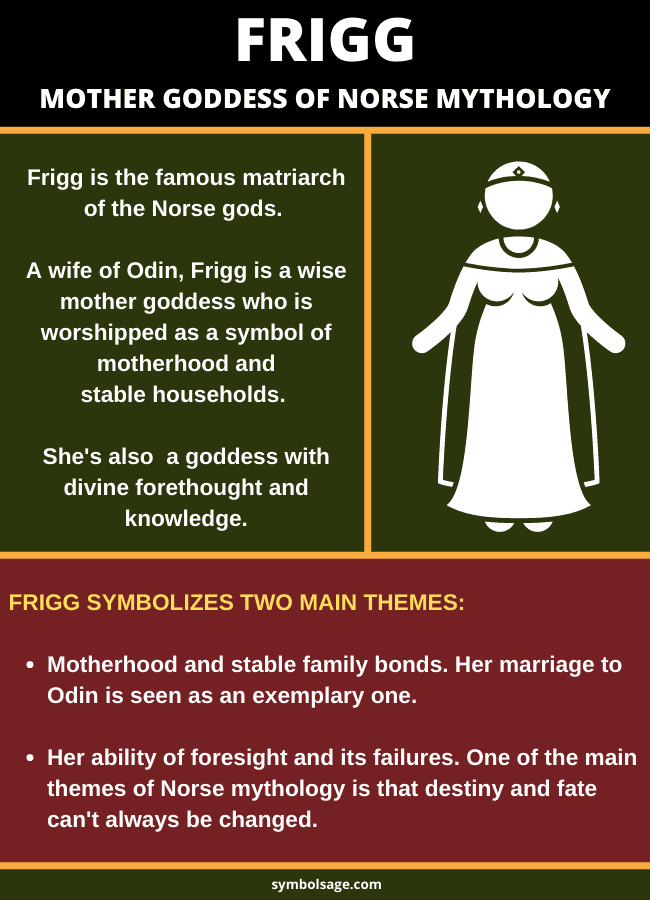
Importance of Frigg in Modern Culture
Just as there isn’t an abundance of preserved Frigg myths and legends, Frigg doesn’t feature much in modern culture. There are quite a few art and literature references and interpretations of Frigg throughout the 18th, 19th, and early 20th centuries but in recent decades she hasn’t been written much about.
Frigg did play a significant role in the Brat-halla humorous webcomics alongside Odin and the child versions of most of their children. But most prominently, Frigg (or rather Frigga) is used in the famous Marvel Thor comics and the later MCU movies. On-screen the goddess is played by the famous Rene Russo and – while not 100% accurate to the Norse original – her character received universal acclaim.
Wrapping Up
As the mother goddess, Frigg has an important role in Norse mythology. Her powers of foresight and magic make her a powerful figure and yet even she isn’t able to prevent certain events from happening.




